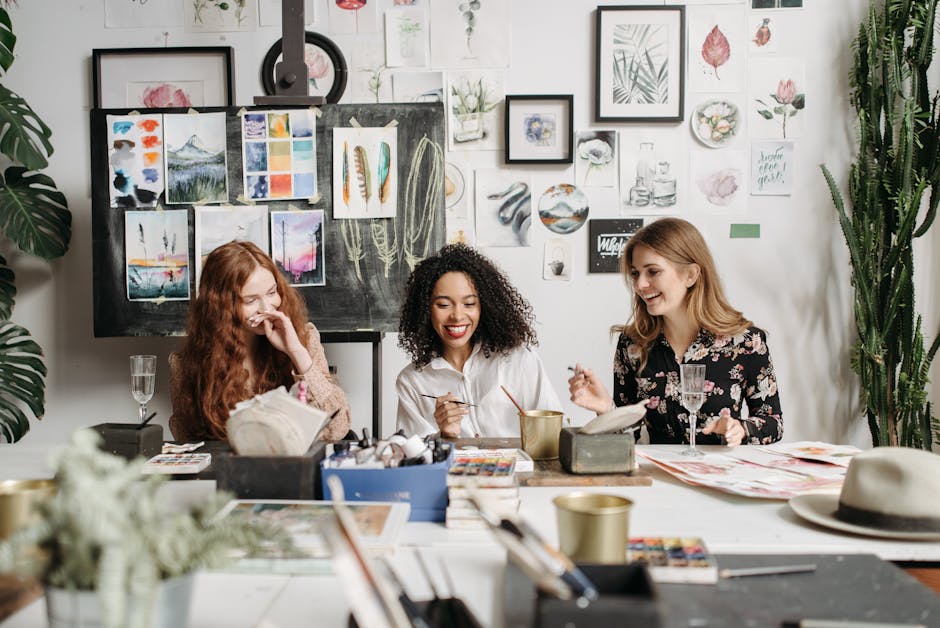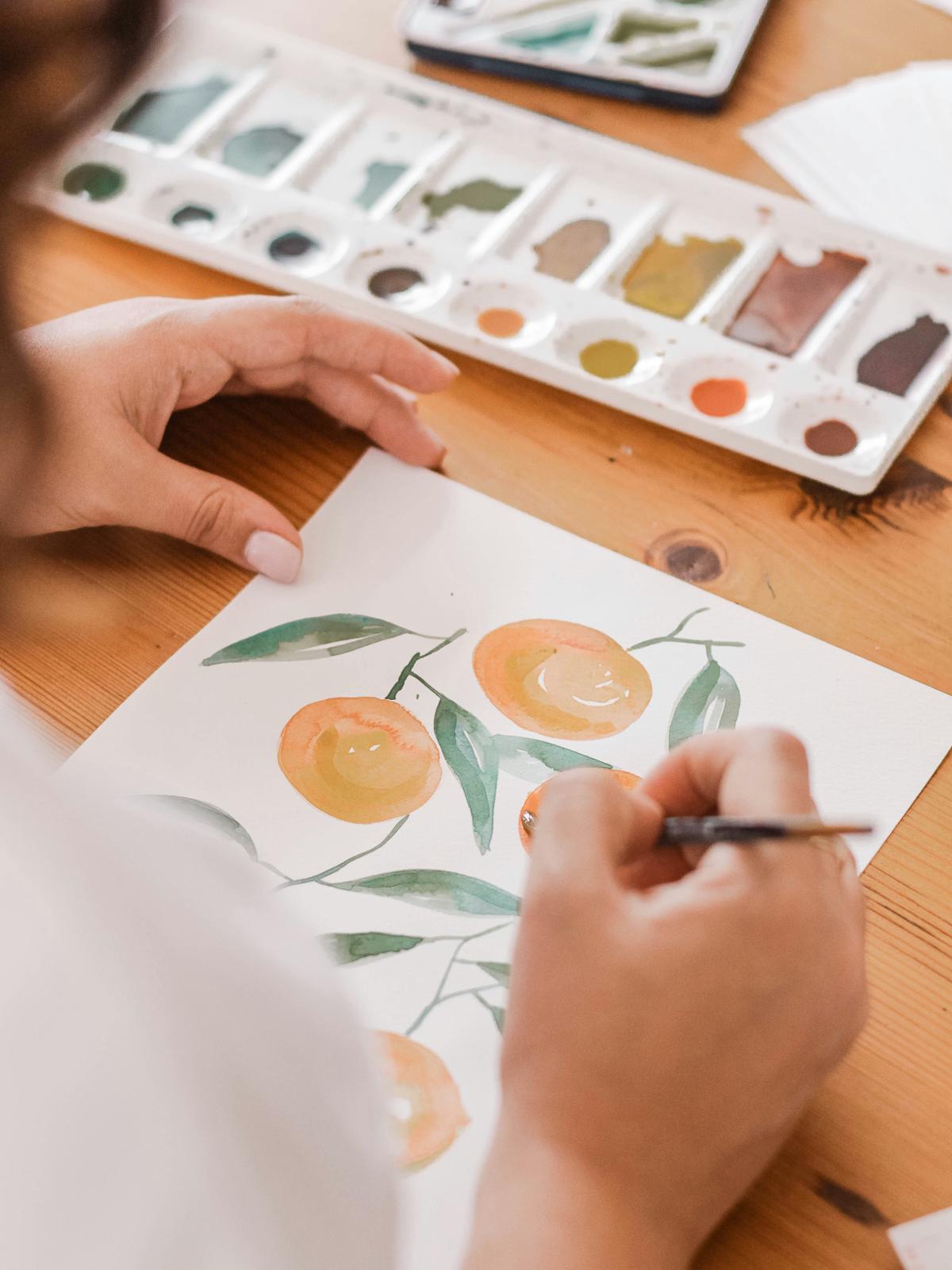Engaging in creative activities can offer a surprising array of benefits, particularly for managing stress. Art workshops provide a unique avenue for individuals to channel their focus and encourage mindfulness through various forms of artistic expression.
Benefits of Art Workshops for Stress Management
Art workshops offer numerous benefits for stress management. When people participate in creative activities like drawing, painting, or coloring mandalas, they often experience a calming effect. This tranquility is largely due to the way art-making channels focus and encourages mindfulness.
Studies have shown that creating art can reduce anxiety and improve mood1. When people immerse themselves in painting or drawing, they enter a state of flow, providing an escape from everyday stresses and allowing the mind to reset.
Mandala coloring is a powerful example of this effect. Carl Jung championed the practice, observing its ability to center and calm individuals. Modern studies back this up, revealing that even simple coloring activities can lower anxiety levels significantly2.
Art workshops cater to various preferences and skill levels. For those hesitant about their artistic abilities, structured activities like mandala coloring can provide a sense of accomplishment. Meanwhile, free drawing or painting allows more confident individuals to explore their creativity and express emotions freely.
Physiological Benefits:
- Reduced cortisol production (primary stress hormone)
- Increased relaxation
- Improved overall sense of well-being
Additionally, art workshops provide social benefits. When people gather to create, they often share their experiences and support one another. This sense of community can be incredibly grounding and uplifting.
Activities such as drawing and painting tap into the brain's right hemisphere, known for its association with imagination and creativity. This shift from the left hemisphere, which handles logic and analytical thinking, can offer a refreshing break and mental reset.
Art workshops aren't just about the final product—they're about the process. Participants can explore different media, experiment without the fear of judgment, and find personal meaning in their creations. This exploratory and non-judgmental environment alleviates pressure and promotes self-expression.
Thus, art workshops serve as a valuable tool for managing stress. They harness the power of creativity to heal and offer both psychological and physiological benefits.

Types of Art Activities for Stress Relief
Several art activities have proven effective for stress relief:
- Drawing: Simple yet effective, requiring minimal materials. It allows for intense focus, leading to a meditative state.
- Painting: Offers a broader canvas for exploration, providing a sensory-rich experience with various colors and techniques.
- Creating Mandalas: Whether drawing freehand or coloring pre-printed designs, the repetitive nature and symmetry provide a calming effect.
- Adult Coloring Books: Contain elaborate designs specifically meant for coloring, helping to quiet the mind and reduce anxiety.
- Creative Journaling: Combines art with writing, encouraging self-reflection and emotional expression through multimedia approaches.
Each of these activities brings unique benefits, yet they share common themes. They all encourage a focus on the present moment, engage multiple senses, and offer a form of self-expression without the need for verbal communication.
"The very act of engaging in these activities is what offers the therapeutic benefits, not the quality of the final product."
The beauty of art activities for stress relief lies in their accessibility. You don't need to be an artistic prodigy to benefit from these forms of creative expression. The process itself is what matters most in achieving stress relief and mental well-being.

Photo by sincerelymedia on Unsplash
Implementing Art Workshops in Different Settings
Implementing art workshops in various settings requires a thoughtful approach to logistics and awareness of participants' needs. Whether conducted in a school, workplace, community center, or online platform, the goal is to create a supportive environment that fosters creativity and stress relief.
School Settings:
- Integration into curriculum or as extracurricular activities
- Sessions lasting 30-60 minutes, depending on age group
- Essential materials: drawing paper, pencils, markers, crayons, watercolors
- Calming environment: dedicated spaces, soft background music, natural light
Workplace Settings:
- Scheduled during lunch breaks or as part of wellness programs
- Sessions lasting 30-45 minutes
- Quiet space with comfortable seating and low-lighting options
- Emphasis on unwinding and enhancing productivity
Community Centers:
- Versatile settings catering to diverse groups
- Sessions ranging from 1-2 hours, with weekly meetings
- Larger quantities and varieties of art supplies
- Focus on building a sense of community
Online Platforms:
- Flexible scheduling for at-home participation
- Typical session duration: 1 hour
- Advance list of required materials provided
- Recommendations for digital tools or apps for creating digital art
- Encouragement to find a quiet space and use headphones
Across all settings, the key to successful art workshops is fostering an environment that prioritizes emotional expression and well-being over artistic perfection. By aligning the logistics with participants' needs and creating a supportive atmosphere, these workshops can serve as a powerful tool for managing stress and promoting mental health.
Art workshops stand as a valuable tool for stress management, harnessing creativity to promote both psychological and physiological well-being. Whether through structured activities like mandala coloring or more free-form painting, these sessions offer a sanctuary from daily pressures, fostering community and enhancing overall mood.
- Kaimal G, Ray K, Muniz J. Reduction of cortisol levels and participants' responses following art making. Art Ther. 2016;33(2):74-80.
- Curry NA, Kasser T. Can coloring mandalas reduce anxiety? Art Ther. 2005;22(2):81-85.

























